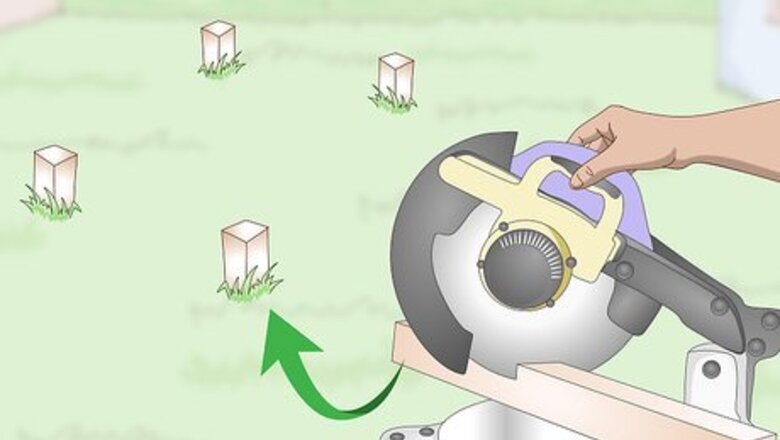
views
Constructing the Raised Bed
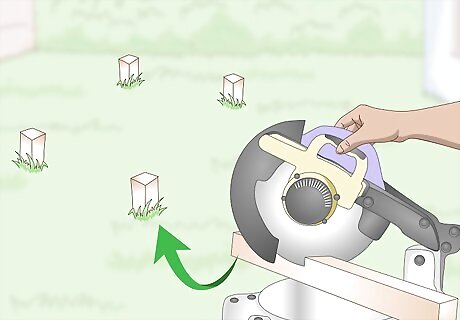
Cut the posts. Use a circular saw to cut two to three 4x4’s into four posts. The posts should be twice as long as the height of your bed. Plant the posts halfway into the ground. Use a measuring tape to space out the posts according to the dimensions of your bed. You can have your posts (and sideboards) pre-cut at your local hardware store. Just make sure you know what size you want your garden to be before going to the hardware store. For example, if you want your garden to be seven inches (178 mm) high, then have four posts pre-cut to fourteen inches (355.6 mm) long.
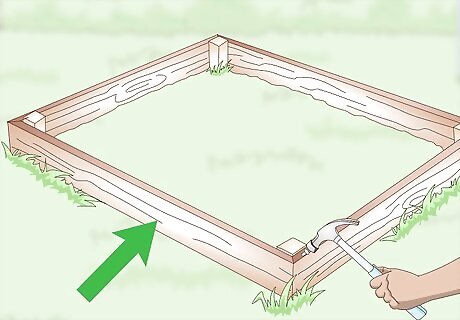
Nail the sideboards to the posts. Have four sideboards pre-cut to fit the frame of the bed. The sideboards should be at least six inches (152 mm) high. Use a hammer to nail the sideboards to the outsides of the posts to make your frame. The posts should be inside the frame. For example, if you want your garden to be a 5x5 foot (1.5x1.5 meter) square, then have four sideboards pre-cut to five feet (1.5 meters) long. Make sure the nails you use are long enough to attach the sideboards to the posts. If you do not have time to build your own raised bed, then use an existing sandbox as your frame.
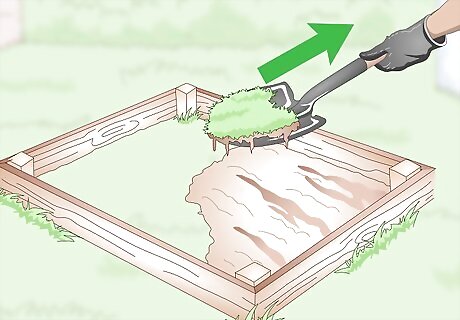
Dig out the grass. Use a spade to remove the top layer of grass inside of the frame. Removing the grass will allow your plants’ roots to grow deeply into the ground.
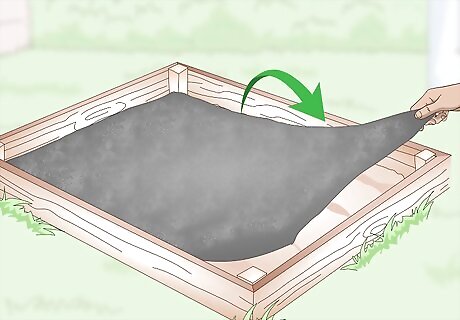
Place landscaping fabric at the bottom of the bed. Cut a piece of fabric that is an inch smaller than the size of your garden frame. Lay the fabric on top of the freshly dug ground. Use your hands and feet to smooth and press the fabric into the ground. For example, if you have a 5x5 foot (1.5x1.5 meter) frame, then cut a 4'10x4'10 foot (1.47x1.47 meters) piece of fabric to fit inside the frame.
Filling the Sandbox
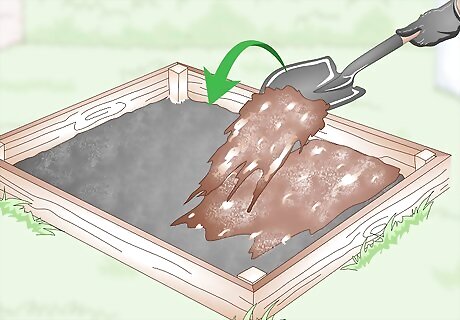
Place a layer of compost. Use a shovel to place the compost on top of the landscaping fabric. Fill your bed a third of the way with the compost and rake the compost smooth.
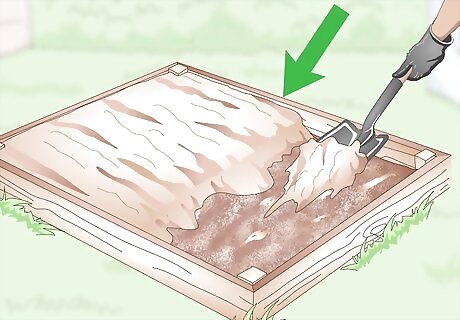
Top the compost with soil. Fill the rest of the bed with nutrient rich soil. Shovel the soil on top of the compost until the bed is full. Then rake the soil until it is smooth.
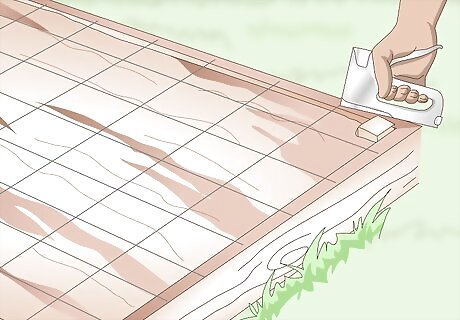
Make a grid with strings. Staple or tape strings lengthwise and across your garden to create a grid. Space the strings five to seven inches apart. The grid will help you plant the seeds evenly and uniformly.
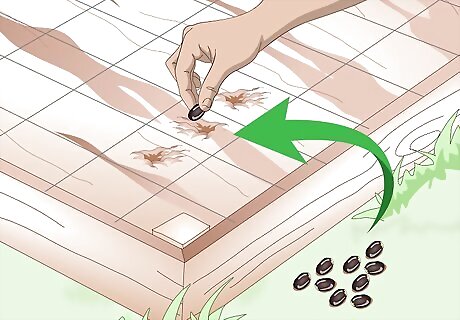
Plant the seeds. In each square, dig a small hole or furrow with a stick or spade per the instructions on the seed packet. Place one or two seeds inside each furrow and cover it with soil. Use a gardening pail to water each seed. Only use enough water to dampen the soil around the seed.
Using a Plastic Sandbox
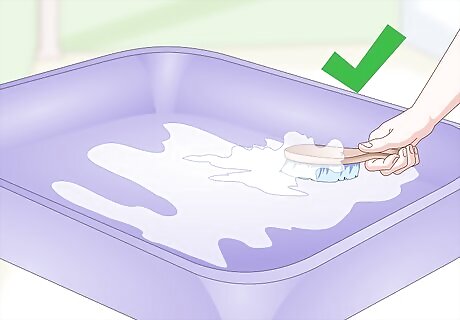
Choose or clean out a child’s sand box. You can either purchase a new plastic sandbox (preferably one that is BPA free) or use an old one that your child no longer uses. If you use an old one, make sure to remove all of the sand and other debris from it and clean it out well, such as by spraying it with a hose.
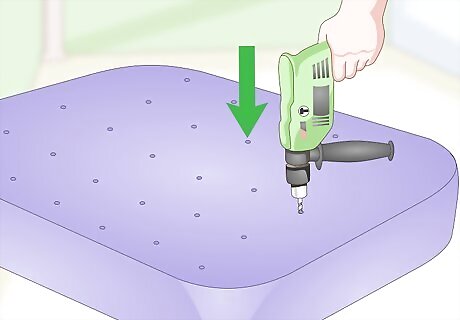
Drill holes into the bottom of the sandbox. It is important to make holes in the sandbox to provide good drainage. Turn the sandbox upside down and use a drill to make several holes evenly spaced around the bottom of the sandbox.
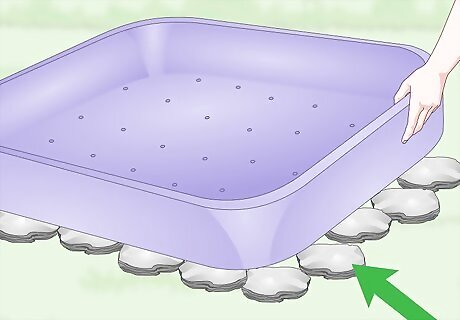
Place the sandbox on a bed of gravel or stones. To improve the drainage of your sandbox, you may also want to place some gravel or stones down where you plan to keep the garden. This will help to prevent water from collecting in the bottom of the box, which will lead to rot.
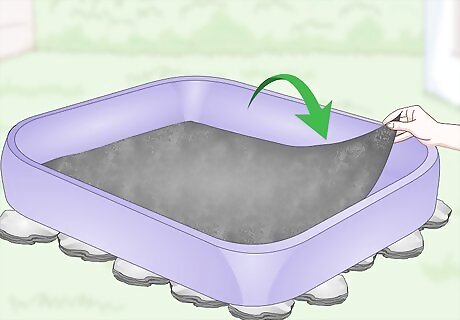
Line the box with landscaping liner or fabric. By placing some landscape liner or fabric in the bottom of the box, you will decrease the amount of weeds that show up in your sandbox garden. Lay down a layer of landscape liner or fabric that is large enough to cover the bottom of the box.
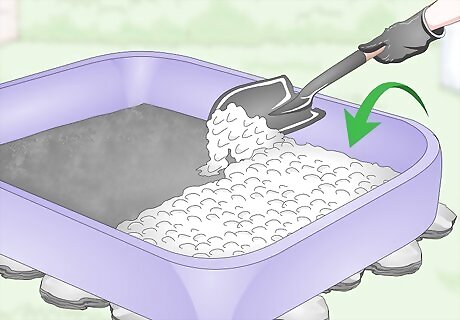
Place 2 inches (5.1 cm) to 3 inches (7.6 cm) of stones or gravel on the liner. Before you add any soil to the sandbox, make sure to line the bottom of the box with 2 inches (5.1 cm) to 3 inches (7.6 cm) of stones or gravel. This will help to ensure that the soil has good drainage.
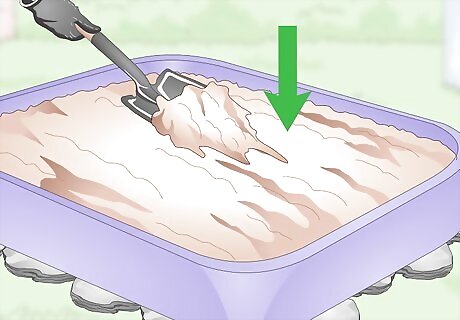
Add the soil. To complete your sandbox garden bed, fill up the sandbox the rest of the way with soil. Make sure to use good soil that is well-suited to growing plants in a container.
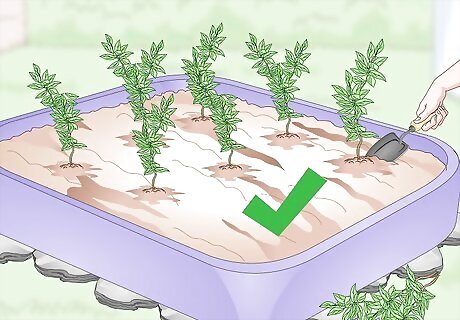
Plant your plants. Choose plants and seeds that thrive in containers. You can grow vegetables, herbs, flowers, or other types of plants in your sandbox garden. Just make sure that they are types that will thrive in a container.















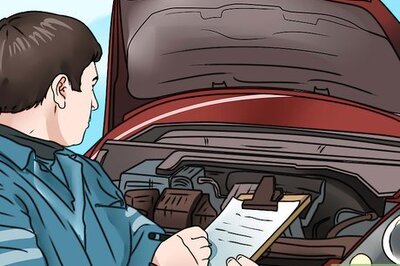




Comments
0 comment